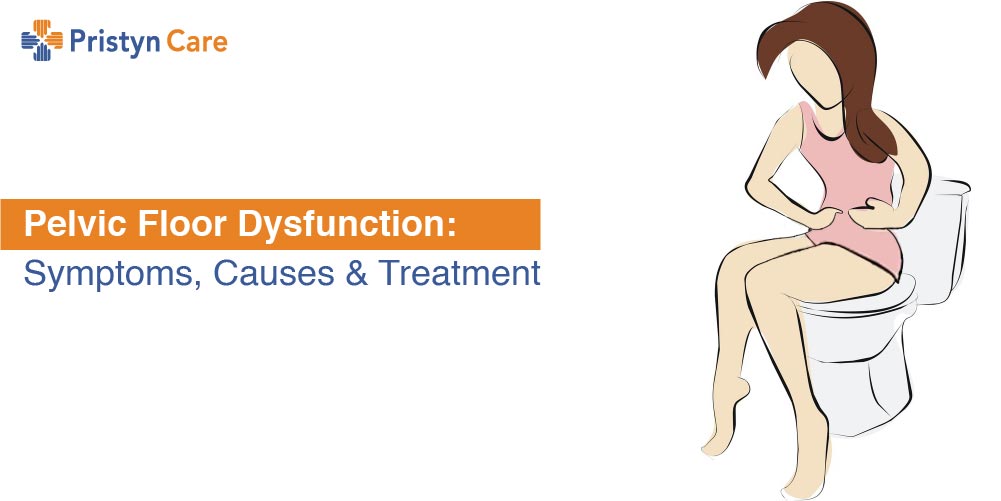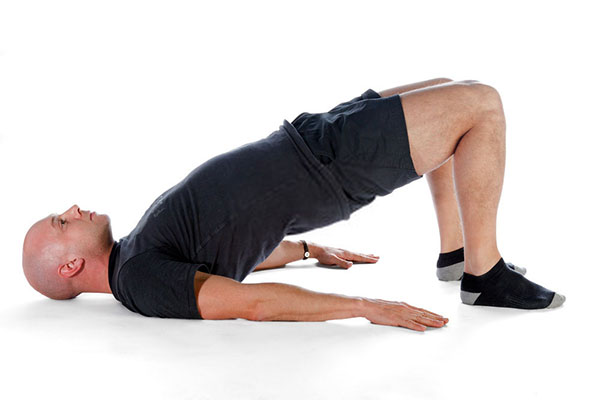
The incapacity to contract and relax the muscles of the pelvic floor to have a bowel movement is known as pelvic floor dysfunction. The pelvic floor is a collection of ligaments and muscles that offer support to all the organs in the pelvic region. The contraction and relaxation of the pelvic floor are necessary to enable normal and comfortable bowel movements.
The pelvic floor comprises of the following parts:
- Bladder
- Rectum
- Prostate (in males) or Uterus (in females)
The inability to contract the muscles of the pelvic floor causes complications in bowel movements, urinating, and leads to painful sex for women. The condition of pelvic floor dysfunction must not be left unattended as it may get worse with time and give rise to infections in the pelvic organs.
Table of Contents
How to identify if you have pelvic floor dysfunction?
Common identifying symptoms relating to pelvic floor dysfunction are:
-Strainful bowel movements
–Constipation
-Leaking of urine or feces
-Pain while urinating
–Painful sexual intercourse for women
-Frequent urge to urinate
-Pain in the lower back
-Feeling of full bowel even after passing stools
-Feeling pressure in the rectal area
-Pain in the genitalia

If you face the above-mentioned symptoms of pelvic floor dysfunction, then it’s time to visit a doctor and get it treated before any further complication arises. It is not wise to leave pelvic floor dysfunction unattended as there are high chances of damage to pelvis organs.
What leads to pelvic floor dysfunction?
It is normal to wonder what actually causes this discomforting condition of pelvic floor dysfunction, especially if you are facing the symptoms.
The following causes may lead to pelvic floor dysfunction:
- A severe injury in the pelvis
- Surgery of the pelvis region
- Childbirth
- Lifting heavy objects
- Injury or damage in the nerves
- Excess body weight

Only a specialist doctor can diagnose the actual cause of pelvic floor dysfunction in a patient. This is why the proper diagnosis is mandatory if you suffer from the painful symptoms of pelvic floor dysfunction.
How to diagnose and treat pelvic floor dysfunction?
Diagnosis of the pelvic floor dysfunction
To understand the actual reason behind the pelvic floor dysfunction, the doctor will ask about your medical history. Usually, the doctor also physically examines pelvis to check for any muscle weakness or spasm.
Internal examination of the pelvis is also carried out to test the contractions or tightening of the pelvic muscles. A device called Perineometer is used for the internal examination through the vagina or rectum.
Another way to check for the capacity of contractions of the pelvic muscles is with the electrodes. The doctor places the electrode between the anus and vagina/ scrotum. It is comparatively less invasive than any other method of diagnosis of pelvic floor dysfunction.
Treatment of pelvic floor dysfunction
Treatments of pelvic floor dysfunction are easily available today. There is nothing to dread about the treatment of pelvic floor dysfunction. The advances in the med-tech have made the treatments of pelvic floor dysfunction simpler than ever. The timely treatment enables a person to feel relaxed in the pelvic muscles. This allows them to have normal bowel movements and keep the muscles in control.
Biofeedback for pelvic floor dysfunction
This treatment effectively helps in training the muscles of the pelvic floor to relax and gain a normal position. Biofeedback is a comfortable procedure where sensors are used to assess muscular activities. The information about muscle activity is used to impart further sensitivity to them. Biofeedback therapy can play a significant role in regaining control over the pelvic muscles. It also releases the stress out of the mind and body. This therapy for plevic floor dysfunction brings a major improvement to bowel movement and relaxes the entire pelvic floor. Also, there are no harmful side effects of biofeedback therapy.
Medicines and Surgery for pelvic floor dysfunction
Do not go for self-diagnosis and medications for pelvic floor dysfunction. You should only have the medicines that your doctor prescribes. Self-medication can cause you a lot of health troubles and make the condition of your pelvic floor dysfunction severe. Therefore, it is wise to consume the muscle relaxant suggested by your doctor only.
Surgery for the pelvic floor dysfunction becomes mandatory if its actual cause is rectal prolapse. In rectal prolapse, the tissues of the rectum droop down to the opening of the anus. So, it requires the surgery to unfasten the pelvic organs and relax the muscles.
How does exercising help in pelvic floor dysfunction?
Kegel exercise
Kegel exercise especially emphasizes boosting the muscular strength of the pelvic floor. Hence, it significantly improves conditions like urinary or fecal incontinence and lower back pain that occurs due to pelvic floor dysfunction. Exercising the pelvic floor is necessary as the muscles tend to weaken with aging. Kegel exercise also lowers the risks of vaginal prolapse in women and speeds the recovery after normal child delivery.
Steps to perform Kegel exercise:
- Sit comfortably on the floor with your eyes closed. Try to bring the focus to feeling the muscles of your urinary bladder.
- Contract or tighten the muscles of the bladder as much as you can. Remember not to overexert.
- Retain this pose for 4-5 seconds and feel the tightening of the muscles.
- Gradually release the posture and repeat the activity 8-10 times.
Hip raise/Bridge exercise
This exercise stimulates and strengthens the muscles of the pelvic floor and the lower back. Hip raise exercise also enhances body posture by emphasizing on the spine and keeps pelvic organs in place.

Steps to do hip raise exercise:
- Lay down straight on your back and place your arms in such a way that your palms are under the butts. Also, make sure that you flex your knees.
- Start raising your hips and notice that your torso and the shoulders are aligned.
- Try and retain this posture for as long as you can. Then, release the posture gradually to avoid any cramps or injury.
Squats to improve pelvic floor dysfunction
Squats are the most effective ways to strengthen the pelvic floor. This exercise makes the muscles of the hips and legs leaner and stronger.
Steps to do squats:
- Inhale deeply and bend the body in a chair-like position. Also, make sure that you keep the arms extended forward without bending down your neck.
- Gently push the hips open and retain this posture for 2-3 seconds.
- Your feet should keep your firm as you start to gradually release the posture. Repeat the pose for 5-10 minutes every day.

You will witness wonderful relief in the symptoms of pelvic floor dysfunction on regularly practicing these exercises. Though natural ways for symptomatic relief in pelvic floor dysfunction are more effective. But, make sure that you seek medical attention on time to treat pelvic floor dysfunction permanently.
Some more useful tips for pelvic floor dysfunction:
- Warm water baths very beneficial in providing relief from the pain due to pelvic floor dysfunction.
- Yoga and stretching exercises are very helpful in relaxing the muscles of the pelvic floor.
- Eat a fiber-rich diet and stay hydrated to keep away the chances of constipation. It prevents excess straining while passing stools that can worsen pelvic floor dysfunction.
Also Read:








